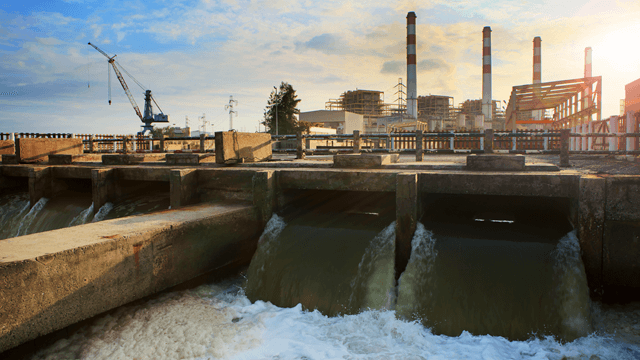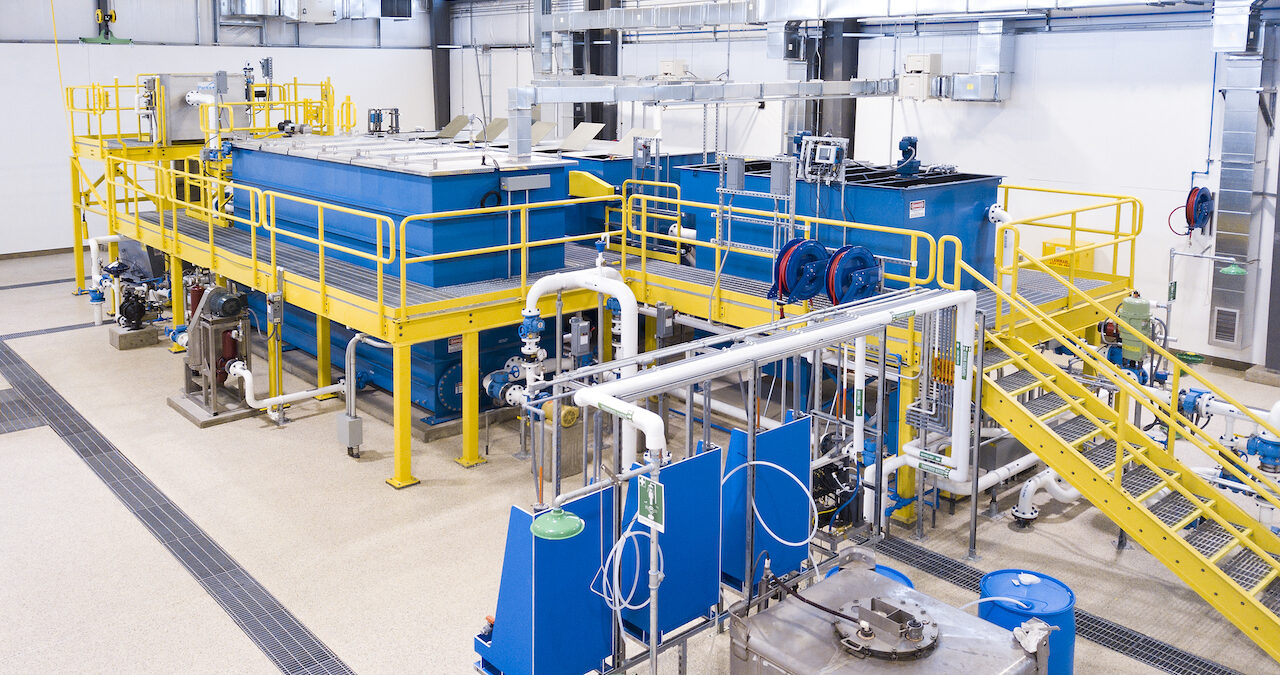Industrial Waste Water Treatment-- Industrial-Grade Water Filtration and Purification Solutions
Wiki Article
Trick Techniques in Industrial Waste Water Therapy Processes
The therapy of industrial wastewater is an important element of ecological management, entailing a series of techniques made to mitigate the impact of pollutants. From the essential physical approaches that separate solids to the innovative chemical and organic procedures that target details pollutants, each technique plays an essential role in accomplishing water quality requirements. Moreover, developments in technologies such as membrane purification and progressed oxidation procedures use ingenious solutions for improving therapy efficiency. Comprehending just how these methods interconnect and their implications for sustainability increases crucial inquiries regarding the future of wastewater management in sector.Physical Treatment Approaches
Just how efficiently can physical treatment techniques address the intricacies of commercial wastewater? Physical treatment approaches play a pivotal function in the initial phases of wastewater monitoring, concentrating mainly on the elimination of solids and huge particulates. Techniques such as filtration, flotation, and sedimentation are crucial for minimizing the concentration of suspended solids, thereby enhancing the performance of succeeding treatment procedures.Sedimentation entails the gravitational settling of solids, permitting for the splitting up of much heavier products from the wastewater. This method is specifically effective in clearing up water prior to organic or chemical therapies.
Furthermore, flotation techniques, which use air bubbles to raise put on hold solids to the surface area for elimination, are efficient in dealing with wastewater with high focus of fats, oils, and greases. Overall, physical therapy methods serve as an important initial step in the comprehensive administration of industrial wastewater, making certain that the lots on succeeding treatment stages is reduced and boosting overall therapy efficiency.
Chemical Therapy Strategies
While physical treatment methods prepared for reliable wastewater administration, chemical treatment techniques are important for addressing the a lot more complex pollutants frequently located in industrial effluents. These approaches utilize different chemical agents to speed up, reduce the effects of, or oxidize harmful compounds, ensuring a more comprehensive removal of pollutants.
One typical strategy is coagulation and flocculation, where chemical coagulants such as light weight aluminum sulfate or ferric chloride are added to promote the aggregation of suspended particles. This procedure boosts solid-liquid splitting up, lowering turbidity and enhancing water top quality. Furthermore, neutralization processes are employed to adjust the pH of wastewater, making use of bases or acids to reduce the effects of acidic or alkaline streams, respectively.
Oxidation-reduction reactions play an important function in degrading organic contaminants and virus. Chemical oxidants like ozone, hydrogen, or chlorine peroxide are utilized to damage down intricate organic substances, making them less harmful or much more naturally degradable. Additionally, advanced oxidation procedures (AOPs) incorporate multiple oxidation methods to enhance pollutant removal efficiency.
Biological Therapy Processes
The effectiveness of wastewater therapy is dramatically enhanced by organic therapy procedures, which harness the natural metabolic activities of microbes to decay raw material and get rid of toxins. Industrial Waste Water Treatment. These procedures largely include anaerobic and aerobic digestion, each customized for particular kinds of wastewaterAerobic therapy procedures utilize oxygen to support microbial development, promoting the breakdown of natural toxins into carbon dioxide and water. Usual methods consist of turned on sludge systems, where oygenation containers promote the mixing of wastewater with bacteria, and flowing filters, which urge biofilm development on media surface areas.
On the other hand, anaerobic therapy processes happen in the lack of oxygen, making use of anaerobic germs to decompose organic matter, causing biogas production, a renewable resource resource. Anaerobic digesters are often utilized in commercial setups for this objective, efficiently lowering the quantity of sludge while producing valuable biogas.
The choice of a biological treatment approach relies on wastewater features, treatment objectives, and governing criteria. The integration of organic processes in wastewater therapy not just enhances contaminant elimination performance however also promotes sustainability by minimizing chemical usage and sustaining resource healing.
Advanced Oxidation Processes

Common AOP methods include Fenton's photocatalysis, ozonation, and reagent. Fenton's reagent, a mix of hydrogen peroxide and ferrous iron, militarizes the development of hydroxyl radicals, making it effective for dealing with wastewater including phenolic substances and various other recalcitrant substances. Ozonation utilizes ozone as an effective oxidant, efficient in breaking down a variety of organic pollutants while concurrently sanitizing the effluent. Photocatalysis utilizes light-activated stimulants, such as titanium dioxide, to improve oxidation responses and get rid of pollutants.
AOPs use several advantages, consisting of minimized sludge manufacturing and the ability to deal with wastewater with high concentrations of organic contaminants. Nonetheless, the execution of AOPs requires mindful factor to consider of functional criteria and cost-effectiveness, guaranteeing that these innovative strategies are appropriately incorporated into existing wastewater therapy systems.
Membrane Filtering Technologies

Microfiltration works for getting rid of suspended solids and microorganisms, while ultrafiltration targets smaller sized natural particles and viruses. Nanofiltration connects the gap between ultrafiltration and reverse osmosis, properly eliminating divalent ions and natural compounds. Reverse osmosis supplies the highest possible level of filtration, used mostly for desalination and getting rid of mono-valent ions.
Membrane layer modern technologies use various advantages, consisting of low power intake compared to traditional therapy techniques, modular style for scalability, and the possibility for water recuperation and reuse. Challenges such as membrane fouling and the requirement for routine maintenance need to be dealt with to make sure system effectiveness. In general, membrane layer filtration technologies represent an important component of modern industrial wastewater therapy methods, promoting sustainability and source preservation in water administration.
Final Thought
Finally, commercial wastewater therapy uses a varied range of methods, including physical, chemical, organic, and progressed techniques. Each technique plays an essential function in successfully resolving numerous impurities, boosting water top quality, and advertising resource sustainability. The integration of these strategies promotes a detailed treatment technique, guaranteeing that additional resources industrial effluents meet governing requirements while reducing ecological impact. Continued developments in these techniques will additionally check my source improve the effectiveness and effectiveness of wastewater therapy processes in industrial settings.The treatment of industrial wastewater is a critical facet of ecological monitoring, involving a variety of strategies developed to minimize the impact of contaminants.Exactly how effectively can physical treatment approaches deal with the complexities of commercial wastewater?Advanced oxidation processes (AOPs) stand for a sophisticated approach in industrial wastewater treatment, created to successfully weaken natural pollutants that are frequently resistant to traditional therapy techniques (Industrial Waste Water Treatment).In conclusion, industrial wastewater therapy utilizes a diverse selection of methods, including physical, chemical, biological, and advanced approaches. Proceeded innovations in these methods will certainly further improve the efficiency and effectiveness of wastewater treatment processes in commercial setups
Report this wiki page